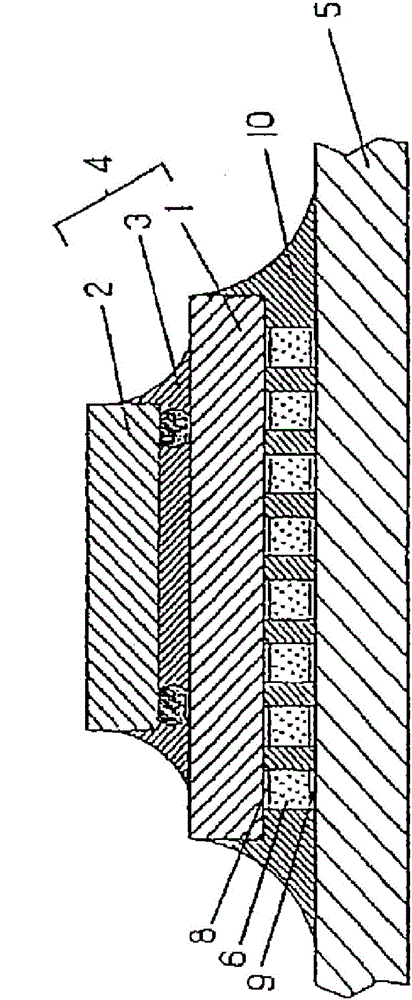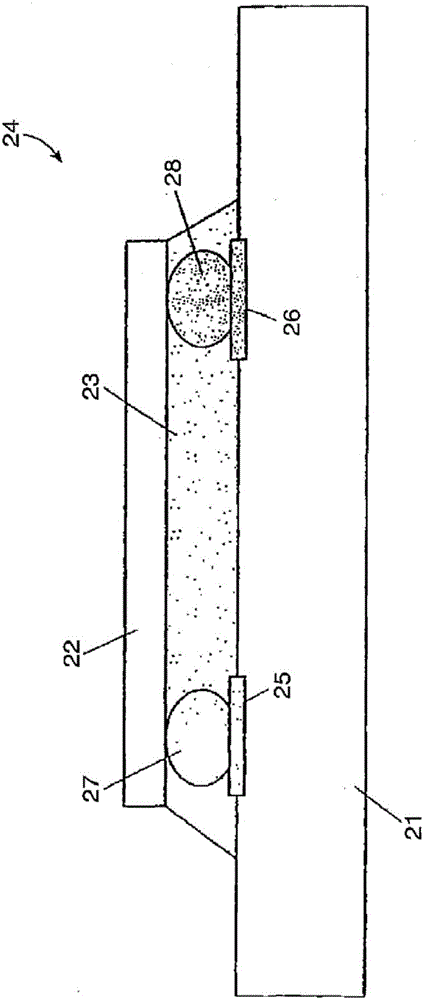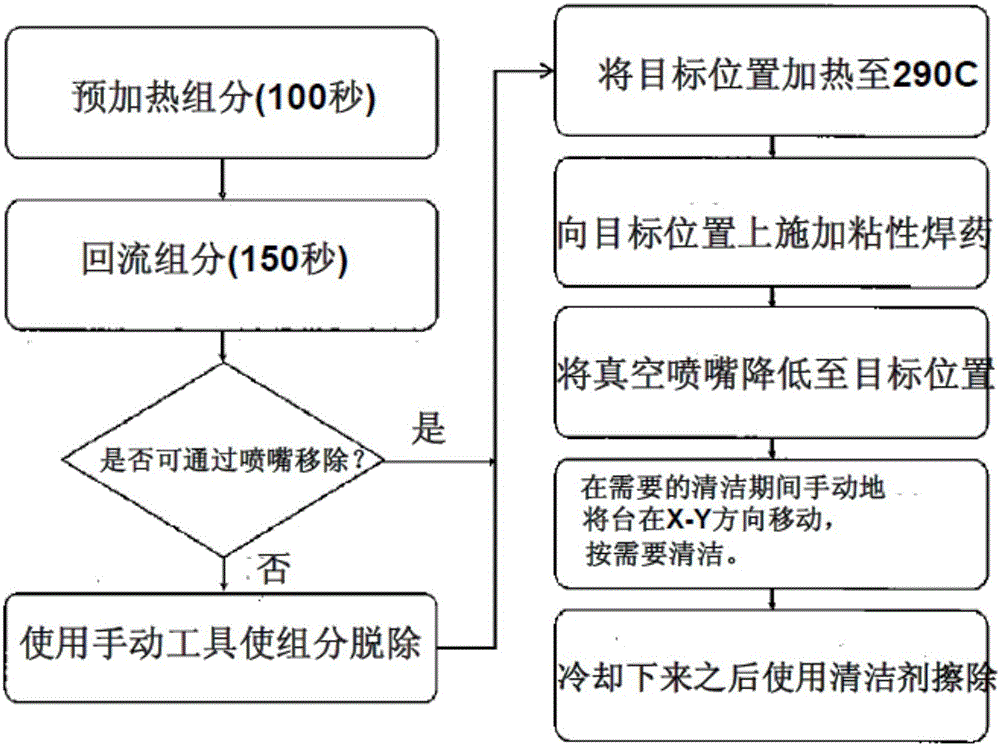Diene/dienophile couples and thermosetting resin compositions having reworkability
A dienophile and composition technology, applied in the direction of online phenolic epoxy resin adhesive, epoxy resin glue, semiconductor/solid-state device manufacturing, etc., can solve the problems of unreliable reliability and achieve good productivity and excellent performance. Effect of Thermal Shock Properties
- Summary
- Abstract
- Description
- Claims
- Application Information
AI Technical Summary
Problems solved by technology
Method used
Image
Examples
Embodiment 1
[0136]
[0137] The dicarboxylic acid of DCPD ("DCPD diacid") (50 g, 227 mmol) and DMSO (300 mL) were placed in a 1 L 4-neck flask equipped with a mechanical stirrer and addition funnel. A solution of KOH (26.8 g) in 30 mL of water was added slowly over a period of 5 minutes and stirring continued for an additional 15 minutes. The reaction mixture was subsequently heated at a temperature of 50° C. using an oil bath. Epibromohydrin (124.4 g, 908 mmol) in 25 mL DMSO was added dropwise over a period of 2 hours and stirring continued for an additional 6 hours.
[0138] The reaction mixture was extracted with 600 mL of ethyl acetate and washed with NaHCO 3 aqueous solution, washed several times with water, followed by anhydrous MgSO 4 dry. The solvent was evaporated to obtain a brown liquid which was subsequently diluted with 50 mL of toluene and distilled to obtain the diglycidyl ester of DCPD diacid ("DCPD epoxide") (60 g, 80% yield).
Embodiment 2
[0140]
[0141] A mixture of DCPD diacid (15.2 g, 69 mmol) and resorcinol diglycidyl ether (30.7 g, 138 mmol) in THF (450 mL) was placed in a 1 L 4-necked flask equipped with nitrogen inlet and mechanical stirrer. After stirring for a period of 30 minutes, a catalytic amount of tetrabutylammonium iodide (1.27 g, 3.44 mmol) was added and the mixture was heated to reflux for a period of 36 hours. Infrared ("IR") spectroscopic analysis was performed which revealed a 1707cm -1 The appearance of the carbonyl band at the
[0142] After cooling the reaction mixture to room temperature, THF was evaporated and 600 mL of ethyl acetate was added to the residue. The organic layer was washed several times with water, washed with saturated NaHCO 3 Wash with aqueous solution, then with water again. with anhydrous MgSO 4 After drying, the solvent was evaporated to obtain the DCPD chain-extended epoxide shown above as a dark brown viscous liquid (35 g, 78% yield).
[0143] IR spectral ...
Embodiment 3
[0145]
[0146] DCPD epoxide (2.06 g, 6.2 mmol), methacrylic acid (0.54 g, 6.2 mmol), tetrabutylammonium iodide (100 mg) and tert-butylcatechol (30 mg) were brought together with THF (20 mL) in a round bottom flask and mix at reflux for a period of 5 hours. After cooling the reaction mixture to room temperature, ethyl acetate was added, and the organic layer was washed with saturated NaHCO 3 Washed twice with aqueous solution, with K 2 CO 3 Washed with aqueous solution and washed with anhydrous MgSO 4 dry. The solvent was then evaporated to obtain DCPD mixed epoxy-methacrylate (1.82 g, 70% yield) as a viscous dark brown liquid.
PUM
| Property | Measurement | Unit |
|---|---|---|
| particle size | aaaaa | aaaaa |
| particle diameter | aaaaa | aaaaa |
| particle diameter | aaaaa | aaaaa |
Abstract
Description
Claims
Application Information
 Login to View More
Login to View More - R&D
- Intellectual Property
- Life Sciences
- Materials
- Tech Scout
- Unparalleled Data Quality
- Higher Quality Content
- 60% Fewer Hallucinations
Browse by: Latest US Patents, China's latest patents, Technical Efficacy Thesaurus, Application Domain, Technology Topic, Popular Technical Reports.
© 2025 PatSnap. All rights reserved.Legal|Privacy policy|Modern Slavery Act Transparency Statement|Sitemap|About US| Contact US: help@patsnap.com



